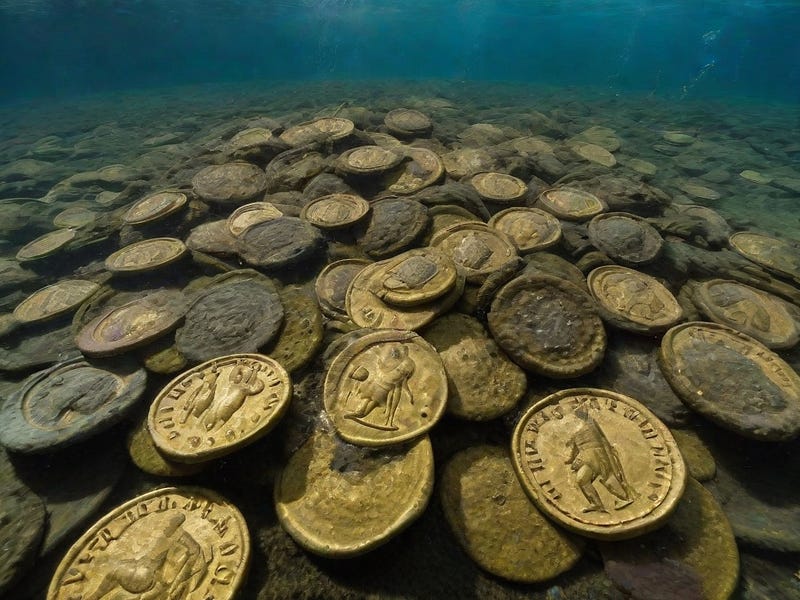Astonishing Discovery: 50,000 Roman Coins Found in Sardinia
Written on
Chapter 1: A Remarkable Find
Recently, the Italian Ministry of Culture announced an astonishing discovery: divers off the coast of Sardinia unearthed nearly 50,000 Roman coins. These bronze coins date back to the 4th century AD.

Sardinia, a rugged island located in the Mediterranean Sea, has a rich history that predates its incorporation into the Roman Empire. Initially, neither Sardinia nor its northern neighbor Corsica belonged to Rome, as the Empire was more focused on conquering the Italian Peninsula. The Phoenicians were the first to establish trade settlements on Sardinia, while the Greeks did the same on Corsica. By the end of the 6th century BC, both islands had come under Carthaginian influence.
The landscape shifted dramatically following the First Punic War, which culminated in a Roman victory over Carthage. Despite remaining under Carthaginian control for several years, ongoing internal strife allowed the Romans to seize the opportunity. By 227 BC, both Sardinia and Corsica were formally recognized as Roman provinces.
An extraordinary event unfolded when an Italian diver, exploring the northeast waters of Sardinia, noticed a metallic shimmer on the seabed. After alerting local authorities, a team of underwater archaeologists was dispatched to investigate further. Within days, they successfully retrieved tens of thousands of Roman coins, with estimates suggesting a total of up to 50,000 coins.
Chapter 2: The Follis Coins
The coins recovered from the Mediterranean are known as follis, a type of late Roman currency first introduced by Emperor Diocletian during a currency reform in 294 AD. Originally, the follis represented 1/8 of a silver argenteus, equating to 1/32 of a Roman pound (libra). This coin type was later reintroduced in Byzantium, and interestingly, the term “follis” is not what the Romans called it; in modern scholarly literature, it is often referred to as nummus.
“This discovery ranks among the most significant numismatic finds in recent years,” stated Luigi La Rocca, a Sardinian archaeological expert. “It underscores the wealth and cultural heritage preserved beneath the waves.”
The first video showcases the remarkable find of 50,000 Roman-era coins by divers, offering insights into this historical treasure unearthed off Sardinia’s coast.
Interestingly, the Italian Ministry of Culture noted that the coins were located in a sandy region adjacent to underwater seagrass and the shoreline, hinting at the possibility of undiscovered shipwrecks in the vicinity.
The British publication, “The Guardian,” recalls a similar event in Devon, UK, in 2013, when a diver retrieved nearly 20,000 coins of the follis type from the seabed near a Roman villa and military fortification dating back to the 2nd-3rd centuries.
The second video features the best Roman coin discovered by a diver, alongside a medieval silver brooch, highlighting the thrill of treasure hunting and archaeological exploration.
Chapter 3: A Call to Support Content Creators
Dear readers,
I would like to address an issue that many content creators, including myself, face on platforms like Medium.com. Despite dedicating significant effort to produce valuable content, the compensation often falls short of what we deserve. If you enjoy my articles and wish to support my work, please consider visiting my “Buy Me a Coffee” page. Your contributions, regardless of size, can greatly encourage me to keep creating engaging and thought-provoking material. Thank you for being part of this journey!

